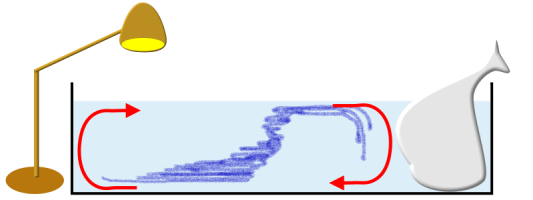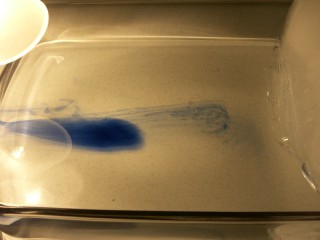 > ACCENT en > Climate Change classes 1 > 2 The Oceans > Experiment ocean circulation
> ACCENT en > Climate Change classes 1 > 2 The Oceans > Experiment ocean circulation
|
Ocean streamsWe can to some extent simulate the ocean turnover in the North Atlantic using a water filled transparent dish (here a lasagne dish was used), a lamp, a plastic bag with ice and some ink in order to colour the water. |
 |
|
By means of a warming lamp (standard bulb light or spot light which emits heat energy) we can simulate the Sun over the left hand side of the vessel. Here are the tropical latitudes and the surface water of the ocean warms up. On the right side of the vessel we simulate the arctic region with its icy water. For this purpose we hang a plastic bag with ice into the water. |
 |
|
After switching on the light and hanging the ice into the water, a circulation slowly establishes. In order to make it visible we can put a drop of ink into the water. |
Material Required are: 1 glass dish with water (here lasagne dish)
|
|
Please click on the animation in order to enlarge it.
|
|



